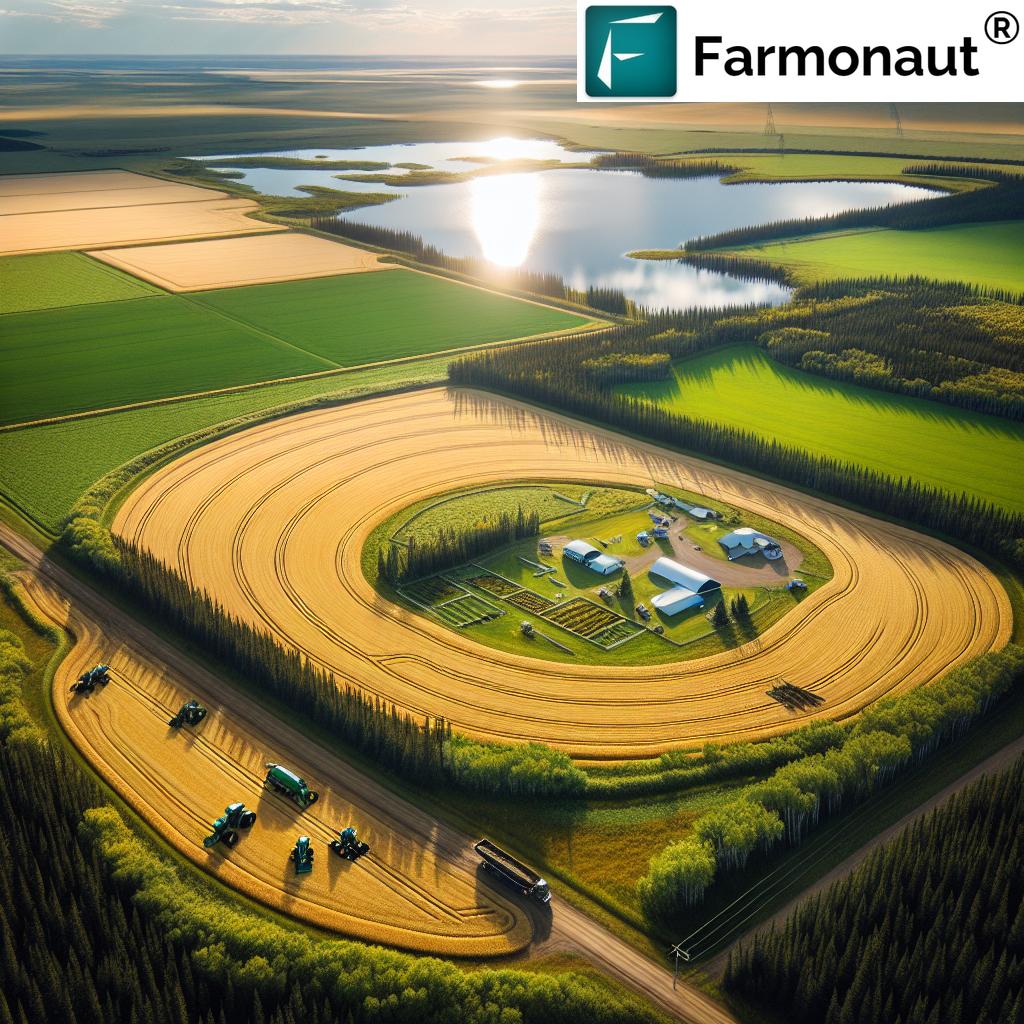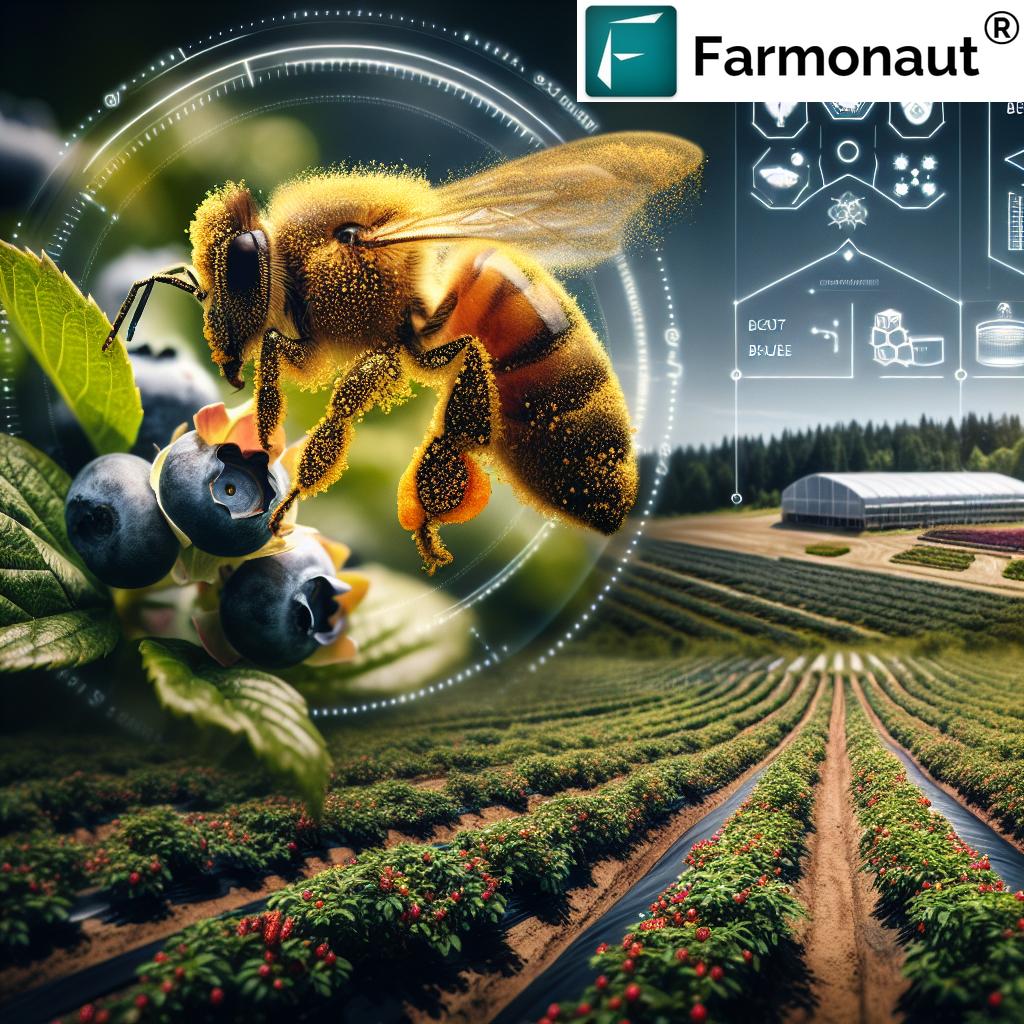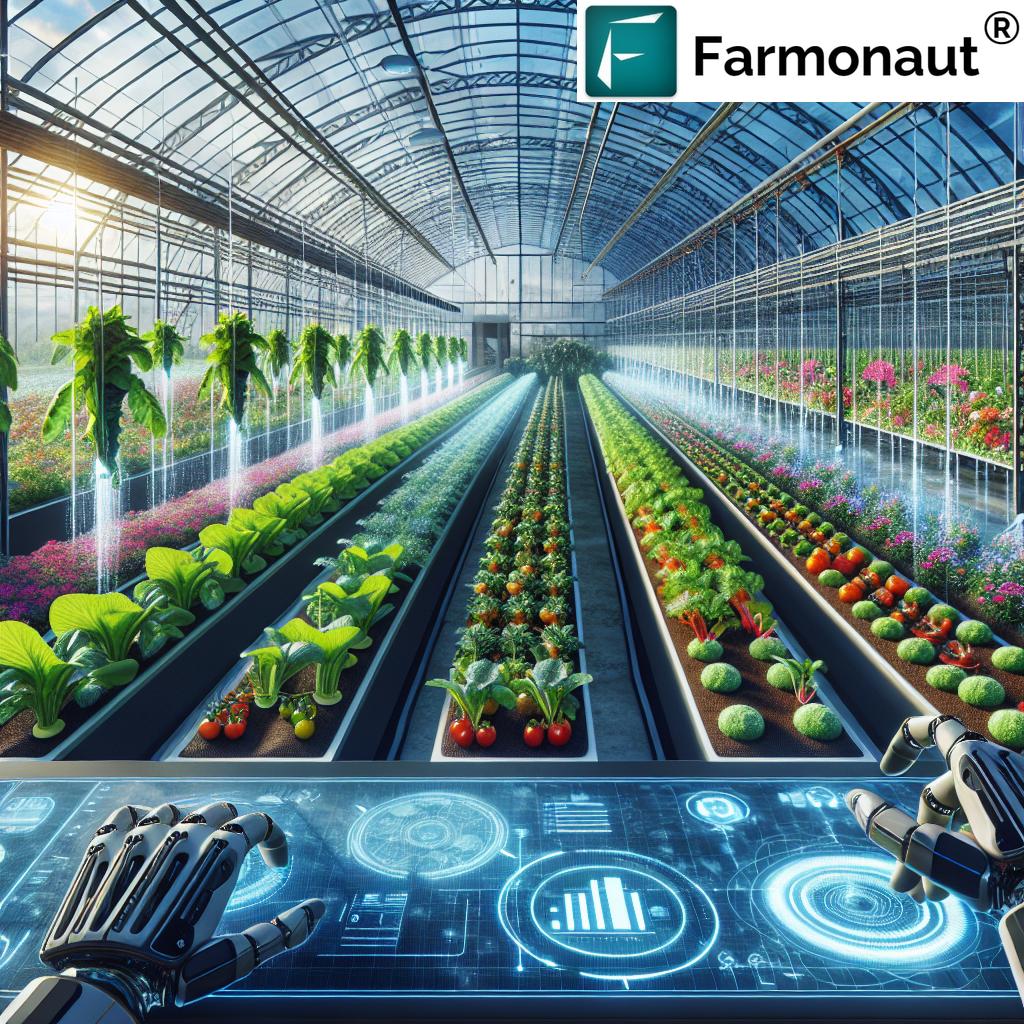Unlocking Soil Wealth: Ontario’s Sustainable Agriculture Practices for Climate Resilience
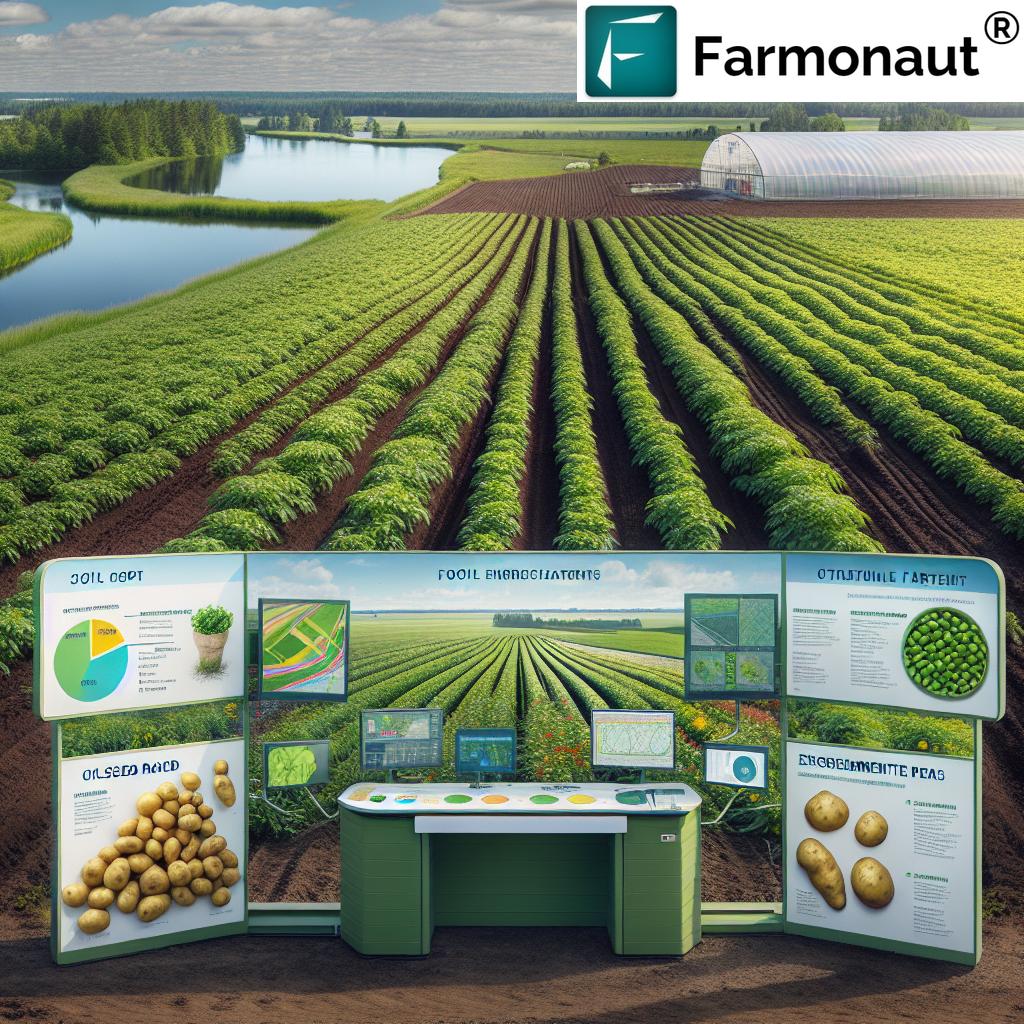
“Ontario potato growers using cover crop mixtures have increased soil organic matter by up to 2% in sandy soils.”
As we delve into the heart of Ontario’s agricultural landscape, we uncover a transformative journey that’s reshaping the future of farming. In this comprehensive exploration, we’ll witness how innovative soil health management practices and sustainable agriculture techniques are not just preserving our land but actively building its wealth. Join us as we unravel the story of a visionary potato grower who’s harnessing the power of cover crops to combat climate change and fortify the foundation of our food systems.
The Power of Soil Health in Sustainable Agriculture
At the core of sustainable agriculture lies a fundamental truth: healthy soil is the bedrock of resilient farming. In Ontario, we’re witnessing a paradigm shift as farmers recognize that soil isn’t just dirt—it’s a living, breathing ecosystem teeming with potential. This realization has sparked a revolution in farming practices, with soil health management taking center stage in the fight against climate change impacts on agriculture.
- Soil organic matter: The key to unlocking agricultural potential
- Water quality: A direct reflection of soil health
- Climate resilience: Building it from the ground up
Our journey begins with a pioneering potato grower who’s rewriting the rules of farming in Ontario’s sandy soils. Through strategic implementation of cover crop benefits, this farmer has not only improved yields but has also become a steward of the land, enhancing soil wealth for generations to come.
Cover Crops: Nature’s Multitaskers in the Field
Cover crops are the unsung heroes of sustainable agriculture. These plants, grown between harvest and planting of commercial crops, serve multiple purposes that extend far beyond their temporary presence in the field. Let’s explore how our Ontario potato farmer has leveraged these green allies to transform their operation:
- Erosion control: Protecting precious topsoil from wind and water
- Nutrient cycling: Enhancing soil fertility naturally
- Soil structure improvement: Creating a hospitable environment for roots
- Biodiversity boost: Supporting beneficial insects and microorganisms
By integrating a diverse mixture of cover crops, including oilseed radish and forage peas, our farmer has witnessed a remarkable improvement in soil organic matter—a critical component of soil health that had been depleted in their sandy fields.
The Science Behind Cover Crop Success
To truly appreciate the impact of cover crops, we need to understand the science that makes them so effective. These plants work in harmony with nature to:
- Sequester carbon: Drawing CO2 from the atmosphere into the soil
- Enhance water retention: Improving drought resistance
- Support soil biology: Fostering a thriving underground ecosystem
- Break pest cycles: Naturally managing harmful nematodes and other pests
Our Ontario farmer’s success story is not just anecdotal—it’s backed by rigorous scientific research and data-driven insights. This is where agricultural technology advancements come into play, offering tools that help farmers make informed decisions about their cover crop strategies.
Innovative Technology in Soil Health Management
In the digital age, farmers are no longer relying solely on traditional knowledge. Advanced agricultural technologies are revolutionizing how we approach soil health and crop management. Here’s how technology is empowering our Ontario potato grower:
- Soil mapping tools: Providing detailed insights into soil composition and health
- Satellite imagery: Monitoring crop health and soil moisture from above
- AI-powered advisories: Offering personalized recommendations for cover crop selection and management
- Precision agriculture: Enabling targeted interventions for optimal resource use
These technological advancements are not just improving efficiency; they’re also playing a crucial role in climate change mitigation and adaptation strategies within agriculture.
Explore Farmonaut’s cutting-edge satellite-based farm management solutions: API | API Developer Docs
Climate Change and Agriculture: A Two-Way Street
The relationship between climate change and agriculture is complex and bidirectional. While farming is significantly impacted by changing weather patterns, it also has the potential to be a powerful force in mitigating climate change effects. Here’s how our Ontario farmer is addressing this dual challenge:
- Adaptive farming practices: Adjusting planting dates and crop varieties to new climate realities
- Carbon sequestration: Using cover crops to capture and store atmospheric carbon in the soil
- Water management: Implementing strategies to conserve water and improve its quality
- Resilient crop systems: Diversifying crop rotations to spread risk and enhance soil health
By focusing on these areas, the farmer is not only protecting their own livelihood but also contributing to broader climate resilience efforts across the agricultural sector.
The Economic Implications of Cover Cropping
While the environmental benefits of cover cropping are clear, many farmers wonder about the financial implications. Our Ontario potato grower’s experience sheds light on the economic aspects of this practice:
- Initial investment: Seed costs and planting expenses
- Long-term savings: Reduced need for synthetic inputs and irrigation
- Yield improvements: Enhanced soil health leading to better crop performance
- Ecosystem services: Potential for carbon credits and water quality incentives
The farmer has found that while there are upfront costs associated with cover cropping, the long-term benefits far outweigh the initial investment. This aligns with a growing body of research supporting the economic viability of sustainable agriculture practices.
“Strategic crop rotation with cover crops can reduce soil erosion by 90% compared to conventional farming methods.”
Crop Rotation: The Cornerstone of Soil Health
Integral to our Ontario farmer’s success is a well-planned crop rotation strategy. By diversifying the types of plants grown in a field over time, the farmer has created a more resilient and productive agricultural system. Here’s how crop rotation complements cover cropping:
- Pest and disease management: Breaking cycles that affect specific crop families
- Nutrient balance: Different crops have varying nutrient needs and contributions
- Soil structure improvement: Diverse root systems enhance soil aggregation
- Risk mitigation: Spreading economic risk across multiple crop types
The potato grower’s rotation includes not only their main cash crop but also carefully selected cover crops that serve specific functions within the rotation cycle.
Water Quality: The Ripple Effect of Soil Health
One of the most significant benefits of improved soil health is its positive impact on water quality. Our Ontario farmer has observed remarkable changes in water management since implementing sustainable practices:
- Reduced runoff: Healthier soils retain more water, decreasing erosion and nutrient loss
- Improved infiltration: Soil structure enhancements allow better water penetration
- Filtration: Soil acts as a natural filter, purifying water as it moves through the profile
- Aquifer recharge: Increased water retention contributes to groundwater replenishment
These improvements in water quality extend far beyond the farm boundaries, benefiting local ecosystems and communities downstream.
Nematode Control: A Natural Approach
Nematodes can be a significant challenge for potato growers, but our Ontario farmer has found an innovative solution through cover cropping. Certain cover crop species have demonstrated remarkable abilities in nematode control:
- Trap crops: Attracting nematodes but preventing their reproduction
- Biofumigation: Releasing compounds that suppress nematode populations
- Soil ecosystem enhancement: Promoting beneficial organisms that prey on nematodes
- Root system diversity: Creating an environment less favorable to harmful nematodes
By carefully selecting cover crops with nematode-suppressing properties, the farmer has reduced reliance on chemical controls while improving overall soil health.
Cover Crop Mixtures: Synergy in Diversity
Our Ontario potato grower has discovered that the true power of cover crops lies in their combinations. By planting diverse mixtures, the farmer maximizes the benefits and creates a more resilient system. Here’s a look at some popular cover crop combinations:
| Cover Crop Type | Soil Organic Matter Improvement (%) | Erosion Prevention (1-5) | Nematode Control (1-5) | Water Retention Improvement (%) | Estimated Cost/Acre (CAD) | Climate Resilience Score (1-5) |
|---|---|---|---|---|---|---|
| Oilseed Radish | 1.5 | 4 | 3 | 15 | 45 | 4 |
| Forage Peas | 2.0 | 3 | 2 | 10 | 60 | 3 |
| Rye | 1.8 | 5 | 2 | 20 | 35 | 5 |
| Oats | 1.2 | 4 | 1 | 12 | 30 | 3 |
| Mustards | 1.0 | 3 | 5 | 8 | 40 | 4 |
This diverse approach ensures that multiple soil health objectives are met simultaneously, creating a more balanced and productive agricultural ecosystem.
Integrating Soil and Water Management Policies
The success of our Ontario farmer’s practices has not gone unnoticed. Policymakers across Canada are taking note of the potential for sustainable agriculture to address both environmental and economic challenges. Here’s how soil and water management policies are evolving:
- Incentive programs: Financial support for farmers implementing sustainable practices
- Research funding: Increased investment in agricultural science and technology
- Education initiatives: Programs to spread knowledge about soil health management
- Regulatory frameworks: Updating guidelines to encourage sustainable farming methods
These policy changes are creating a supportive environment for farmers looking to transition to more sustainable practices, helping to scale up the impact of individual efforts like those of our Ontario potato grower.
The Role of Technology in Sustainable Agriculture
As we’ve seen throughout our exploration, technology plays a crucial role in modern sustainable agriculture. From satellite imagery to AI-powered advisory systems, farmers now have access to tools that can significantly enhance their decision-making processes. Here’s how technology is shaping the future of farming:
- Precision agriculture: Optimizing resource use through data-driven insights
- Remote sensing: Monitoring crop health and soil conditions from afar
- Predictive analytics: Forecasting weather patterns and pest outbreaks
- Automation: Reducing labor costs and improving efficiency in farm operations
Our Ontario potato grower has embraced these technological advancements, integrating them seamlessly into their sustainable farming practices.
Climate Change Adaptation in Agriculture
As climate change continues to present challenges to agriculture, farmers like our Ontario potato grower are at the forefront of adaptation strategies. Here’s how sustainable practices are helping farms become more resilient:
- Drought resistance: Improved soil structure and water retention capabilities
- Flood mitigation: Enhanced soil infiltration rates reducing runoff
- Temperature regulation: Cover crops providing shade and moderating soil temperatures
- Pest management: Diverse ecosystems supporting natural pest control mechanisms
By focusing on soil health and sustainable practices, farmers are not only adapting to climate change but also contributing to its mitigation through carbon sequestration and reduced greenhouse gas emissions.
The Future of Sustainable Agriculture in Ontario and Beyond
As we look to the future, the practices implemented by our Ontario potato grower serve as a blueprint for sustainable agriculture across the province and beyond. Here’s what we can expect in the coming years:
- Widespread adoption of cover cropping and diverse rotations
- Increased integration of technology in farm management
- Greater collaboration between farmers, researchers, and policymakers
- Expansion of markets for sustainably produced foods
These trends point towards a future where agriculture not only feeds the world but also plays a key role in environmental stewardship and climate resilience.
Conclusion: Cultivating a Resilient Future
The journey of our Ontario potato grower illustrates the transformative power of sustainable agriculture practices. By embracing cover crops, innovative technologies, and holistic soil health management, farmers can unlock the true wealth of their land. This approach not only enhances productivity and profitability but also contributes to broader goals of climate resilience and environmental stewardship.
As we face the challenges of climate change and food security, the lessons learned from this Ontario farm serve as a beacon of hope. They demonstrate that with the right practices and technologies, we can create a future where agriculture is both productive and sustainable, nourishing both people and the planet.
The path to this future requires commitment, innovation, and collaboration. But as our Ontario potato grower has shown, the rewards—for farmers, communities, and the environment—are well worth the effort. Let us move forward, inspired by this example, to cultivate a resilient and sustainable agricultural future for generations to come.
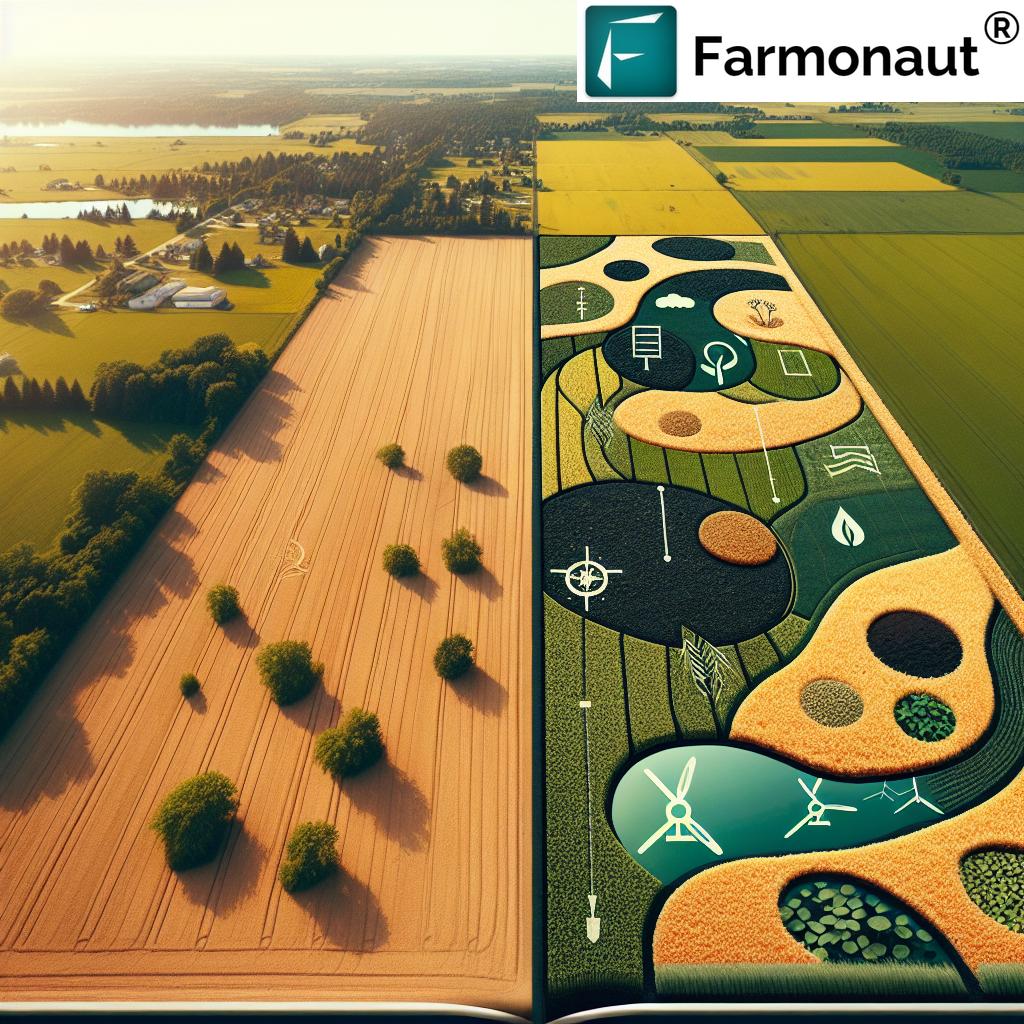
FAQ: Sustainable Agriculture Practices in Ontario
Q: What are the main benefits of cover cropping?
A: Cover cropping offers numerous benefits including improved soil health, increased organic matter, erosion control, enhanced water retention, and natural pest management.
Q: How does sustainable agriculture contribute to climate change mitigation?
A: Sustainable agriculture practices like cover cropping and reduced tillage help sequester carbon in the soil, reduce greenhouse gas emissions, and improve overall farm resilience to climate impacts.
Q: Are sustainable farming practices economically viable?
A: Yes, while there may be initial costs, sustainable practices often lead to long-term savings through reduced input needs, improved yields, and potential ecosystem service payments.
Q: How can technology support sustainable agriculture?
A: Technology such as satellite imagery, soil mapping tools, and AI-powered advisories can help farmers make more informed decisions about crop management, resource use, and sustainable practices implementation.
Q: What role do government policies play in promoting sustainable agriculture?
A: Government policies can provide financial incentives, fund research, establish educational programs, and create regulatory frameworks that encourage the adoption of sustainable farming practices.






